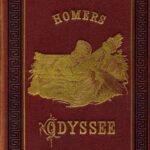I had never heard of a blocked tear duct before our pediatrician diagnosed our infant son with dacryostenosis, the medical term for this condition. Dacryostenosis may sound like a serious medical condition, but parents shouldn’t panic when they are given this diagnosis. What causes clogged tear ducts in infants and what can parents do if their baby’s tear duct is blocked?
When to suspect your child has a blocked tear duct
When our child was a few months old, we noticed tears pooling in one of his eyes while the other was crystal clear. In addition, he would awaken from sleep with his eye crusted over, sometimes with his long lashes glued down with a mucous-like substance. Fearing that he had an eye infection, we visited the pediatrician who diagnosed him with Dacryostenosis – a clogged tear duct.
How common is dacryostenosis? Children’s Hospital of Boston states that blocked tear ducts occur in about 20% of infants, so it is a fairly common occurrence. Sometimes babies are born with this condition as they still have a thin membrane blocking passage of tears to the nose for drainage.
What can parents do to help a clogged tear duct open?
Our pediatrician advised us to massage our son’s tear duct a few times per day. Dr. Greene gives excellent instructions for performing this massage at his site, which is sourced below. Other than massaging our son’s eye, we had to be extra vigilant about keeping his eye clean. Because of the excess mucous, we had to make sure we washed his eye area well before taking pictures to avoid “eye ookie” shots.
When is a specialist necessary? What if it doesn’t open?
No worries. For 95% of children who are diagnosed with a clogged tear duct, the offending duct opens on its own usually by the time the child reaches one year of age. If the clogged tear duct doesn’t self resolve by then, your doctor can refer you to a pediatric ophthalmologist. Because our son’s tear duct wasn’t resolving on its own, we did visit a pediatric ophthalmologist who suggested giving him just a little more time. If it had been necessary, she could have opened the blocked duct with a probe. As it happened, it wasn’t long after the pediatric ophthalmologist visit that it did resolve on its own.
Final thoughts on our son’s blocked tear duct
Other than needing to make an effort to cleanse our son’s eye before taking any of the numerous cute baby pictures that parents are wont to do, the blocked tear duct didn’t bother him. Massaging his eye the prescribed number of times per day was easy to do as we timed it with diaper changes.
This article is based upon Carly Hart’s personal experience. Do not rely on this article on Dacryostenosis for medical advice as she is not a medical professional. Please consult with your child’s physician on matters regarding their health and well-being.
Sources:
http://www.childrenshospital.org/views/june06/blocked_tear_ducts.html
http://www.drgreene.com/21_1035.html


